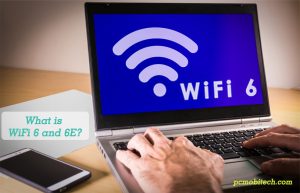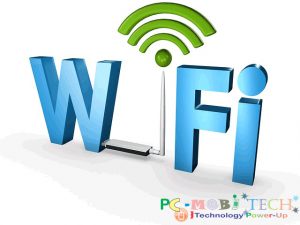The wireless technology that enables different devices such as desktops, laptops, smartphones, wearables, printers, video cameras, etc. to connect with the internet is understood as WiFi.
Internet connectivity is channelized via a wireless router and radio wave in the Wi-Fi. Working of Wifi is based upon the IEEE 802.11 family of standards, and it is actually a LAN (Local Area Network) Technology that offers in-building broadband coverage.
In this article, we will delve into what WiFi is, how it works and other key concepts associated with the communications via WiFi. So, without any further ado, let us get started with the meaning of WiFi-
Quick Links
Meaning of WiFi

Wireless Fidelity, well-known as WiFi, is very much admired these days. It is a wireless networking technology that allows devices to connect with the internet. Using a wireless adapter, hotspots are created to communicate with the WiFi.
One can just get hotspots and connect, be it at home, hotels, airports, in libraries, almost everywhere. It uses radio waves to provide network connectivity in devices such as mobile phones, laptops and desktops, game devices, and advanced printers.
Its frequencies are different from that of car radios, weather radios, cell phones, and other two-way communication devices. Also, a mobile hotspot can be considered as a portable Wi-Fi hotspot, which is obtained through a cell phone carrier.
Wireless routers should also be known when talking about WiFi. It is sometimes referred to as the Wireless local area network (WLAN) device, as the wireless network is also called a WiFi network.
The wireless routers are usually found in homes. It combines the networking function of a wireless access point and a router.
You May Also Read:
Key Terms associated with WiFi
1) Radio Signals
WiFi networking becomes possible because of the radio signals. Wifi Antennas transmit these radio signals which are later picked by the WiFi receivers like PCs or Smart-devices that have WiFi cards. So, these radio signals are read by the Wifi cards that create an internet connection between a network and users without using any wire.
2) Antennas and Routers
Antennas and routers are the access points that receive and transmit the radio waves. The radiuses of antennas are 300 to 500 feet and they offer longer radio transmission that is primarily used for the public places, while on the other hand, routers are best suited for the home users, as its radio transmission range is 100 to 150 feet.
3) WiFi Cards
These cards play a significant role in connecting your PC or device to the antenna for connecting with the internet. They can be internal as well as external cards. So, if your device does not have Wi-Fi cards, you may purchase the external cards from the market.
How does WiFi Work?
Everything follows certain criteria to work; the same does Wi-Fi. Just like mobile phones, radios, and televisions, WiFi network uses radio waves. It is more like two-way radio communication since a wireless adapter transmits signals using an antenna once they translate data into radio signals. Then, the signal is received by a wireless router, which also decodes it.
Furthermore, with the help of an internet connection, it gets the information that was sent by the router. This process works the same in reverse order. That’s how we communicate and receive signals in the form of data.
WiFi Communication Radio Waves are almost the same as that of radio. Some points differentiate them from each other. The frequency in which WiFi signals transmit is somewhat higher than the frequency of cell phones, televisions, and walkie-talkie.
For example, if we are talking about car stereo, then they receive frequency in kilohertz and mega Hertz range while Wi-Fi transmits and receives data in the Gigahertz range.
So they can allow the signals to carry more data. They transmit the signals at a frequency of 2.4 GHz and 5GHz. These are similar to frequency found in microwaves.
WiFi IEEE Standards
IEEE 802.11 standards define the over-the-air interface between a base station and wireless client or in between two wireless clients.
As we have previously mentioned that this wireless network will transmit the signals at a frequency of 2.4 GHz and 5 GHz. It covers IEEE 802.11 technologies. There are various forms of this frequency which provide different speed. They are as follows:
- 802.11a will transmit the signals at a frequency of 5 GHz. It also uses orthogonal frequency division multiplexing (OFDM); this is the best one can do for reducing interference between the signals. It splits the radio signals into several sub-signals before reaching the data to the receiver.
- 802.11b will transmit the signals at a frequency of 2.4 GHz. It uses complementary code keying (CCK) modulation to improve speed. It is slow and less expensive as compared to others. It was famous once when relatively faster ones were expensive, but now they are cost-effective. Also, this can just transmit a maximum of 11 megabits of data per sec. Therefore, people don’t prefer this one.
- 802.11g will transmit the signals at a frequency of 2.4 GHz. This one is the same as the 802.11b as mentioned above, but a lot faster. It can transmit up to 54 megabits of data per second. It is relatively faster as it OFDM coding as 802.11a.
- 802.11n is the most effective and preferred these days. It transmits a maximum of 140 megabits of data per second and uses a frequency level of 5 GHz. It provides you with the highest speed among the previously mentioned. Even the last one, 802.11g, can’t accurately provide 54 megabits of data per second due to network congestion. But this 802.11n is efficient and works appropriately.
- 802.11ac is the most advanced and the newest of all. It hasn’t been spread all around the word yet. But the devices which can support this frequency and speed are already available in the market. It is a far processor of data and signals as it has less interference. Any frequency with which has less interference with signals will ultimately have higher data speed. Therefore, this makes it the best of all. Also, it has a maximum of transmitting 450 megabits of data per second on a single stream.
Also See: What is WiFi 6 and 6e? & difference between WiFi 6 and 6e.
Key things to Remember while installing a Wifi Network
Gone are the days when people weren’t aware of the internet. There were days when people just had a single computer which was barely used. Nowadays, the internet is living inside each house. Everyone needs it.
So, now, the time has changed, and people have changed. They need the internet for studying, playing, social networking sites, preparing presentations, and other stuff. If each person of a family uses the internet then it is better to install a WiFi network in your house rather than spending on mobile data.
So here are some points which you will need while installing a wireless network:
- A Broadband internet connection: A high-speed broadband connection (i.e., DSL, cable, or fiber) is required in order to connect your home network with the internet.
- An access point or a wireless router: You need to purchase any of these, be it a wireless router or an access point. There is a modern wireless router that comes equipped with integrated wireless networking capabilities. So there is no need to purchase a separate wireless router/access point if you have a modern wireless router.
- Devices with wireless networking capabilities: Built-in wireless capabilities like 802.11b/g, 802.11b/g/n, or 802.11ac, are already present in most newer devices. These devices are capable of connecting directly to the wireless router.
- A wireless network adapter to connect other devices in the home: Any old devices like television, or laptop, or Blu-ray player which do not have built-in wireless support. You might have to purchase a wireless network adapter in such cases to connect to your wireless network.
To connect your device to a wireless network, you need to follow some steps of enabling devices.
When it is within the range of its wireless router, a WiFi-enabled device can connect to the network. Also, if the security is enabled on your WiFi network, then you will have to enter the password.
Any device you want to connect with your WiFi will ask for the password as per security rules. Only if you have it enabled, then, your device will be wirelessly connected to the router. And it won’t ask for the password every other time when you want to connect.
WiFi Security
There are various types of wireless security that you should be knowing. These are as follows:
- WEP (Wired Equipment Privacy): It is the earliest type of wireless security. It was approved in 1999. When the user connects to a WEP-protected network, some “initialization vector” is created through the WEP key. And when the user goes to connect to an access point, they receive an authenticating request. And when the user encrypts the challenge, the AP decrypts it. Only if it matches the original problem sent, then it will authenticate the user. But it had severe network issues, which made it not fit for securing the network.
- WPA (WiFi Protected Access): WiFi Alliance in 2003 authorized this after the response they got on WEP. Because of its insecurities, this new one was upheld. Though it offered serious security improvements, it wasn’t up to the mark.
- WPA2 (WiFi Protected Access updated version 2): It was introduced in 2004. The only people who are still using it on the network are those who are dealing with hardware for 802.11g.
- WPS (WiFi Protected Setup): A new security method which came in 2007. It began to show up on the wireless access point. The user can add new devices to their network by just pushing a button. An 8-digit PIN is asked on the user device. When it is fully authenticated, then it connects to the network.
WiFi Network Services
With the help of Wifi, some service providers have started offering some kinds of network services. Two of the most popular forms of Wifi network services are-
1) Wireless ISPs (WISPs)
In this, selling an Internet Access service is done through a Wireless LAN technology to offer a shared internet connection in any public location.
2) City Wide Mesh Networks
With the help of Wifi radio technology, mesh network capabilities are developed by some service providers that can be used for relaying messages via different access points to a Central Network Control station.
Wrapping it up!
On the concluding note, we can say that here we came to know what WiFi means. We hope, the post would have helped you to understand the basics of WiFi.
This wireless networking is also known as 802.11 networking because of its access through 802.11 technologies.
WiFi is compatible with almost every operating system, game device, laptops, smartphones, and even printer, which makes it a better option. Instead of having specific mobile data for each device, you should go for a better WiFi network.
Also, it depends upon the frequencies, be it the speed of networking standards. Each form of 802.11g has a specific frequency and the speed of data per second. It varies accordingly.
It is crucial to have a secured WiFi. Not just having it in your place will work if you don’t own security access. It is crucial to have security, at least at your house WiFi network. Or else everyone can use and have access to your WiFi, which can cost you a lot. Therefore, go through these points while installing a WiFi network.
Having any queries about the working of WiFi networks? Did we miss any of the key concepts associated with Wireless Fidelity? Share your views with us in the comments below.
When you purchase through links on our site, we may earn an affiliate commission. Read our Affiliate Policy.




